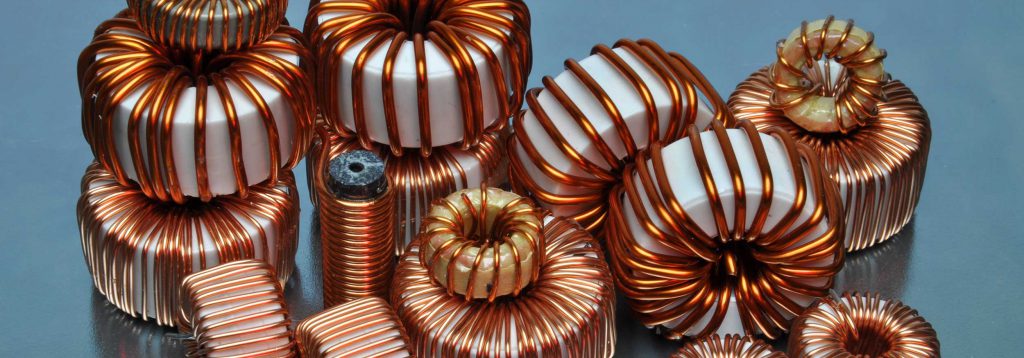 Toroids are excellent devices that are used to safely power most modern electronics. Because of the number of benefits, toroids are often seen as the number one option for power transformers (compared to traditional transformers). The doughnut-shaped magnetic cores are mainly different in shape, which allows for many of the benefits of toroids. The two most significant factors to consider when constructing toroids are the type of custom coil winding and the material used to create the core. Below, we want to discuss two of the most commonly used core materials and their differences. Often, toroidal transformers are built with powdered iron or ferrite cores.
Toroids are excellent devices that are used to safely power most modern electronics. Because of the number of benefits, toroids are often seen as the number one option for power transformers (compared to traditional transformers). The doughnut-shaped magnetic cores are mainly different in shape, which allows for many of the benefits of toroids. The two most significant factors to consider when constructing toroids are the type of custom coil winding and the material used to create the core. Below, we want to discuss two of the most commonly used core materials and their differences. Often, toroidal transformers are built with powdered iron or ferrite cores.
When should a person use a ferrite or a powdered iron core?
In simplest terms, a powdered iron core is used in circuits that demand a high Q-level within a narrow-band network. For instance, this material is often found in mixers, amplifiers, oscillators, and RF filters. It is important to note that powdered iron comes in different types that meet the needs of a given frequency range. Although the devices are commonly used for audio inductors, they are also known for their high levels of permeability.
A ferrite toroid core, on the other hand, is best implemented in RF circuits that have a narrow band (10 MHz). Ferrite cores are found in broadband inductors and transformers, such as RF chokes and solid-state circuits. It is important to remember that ferrite is a brittle material that can break when stressed. Iron cores are known to return to normal MU after cooling, but ferrite cores do not.
For more info on the differences between the two above materials and how to make the proper choice, you should not hesitate to reach out to our talented team. We are toroid and custom coil winding experts.

